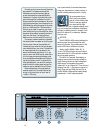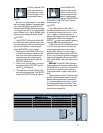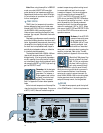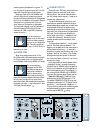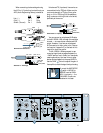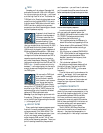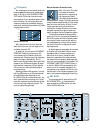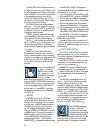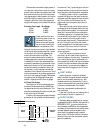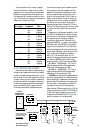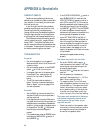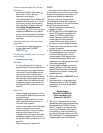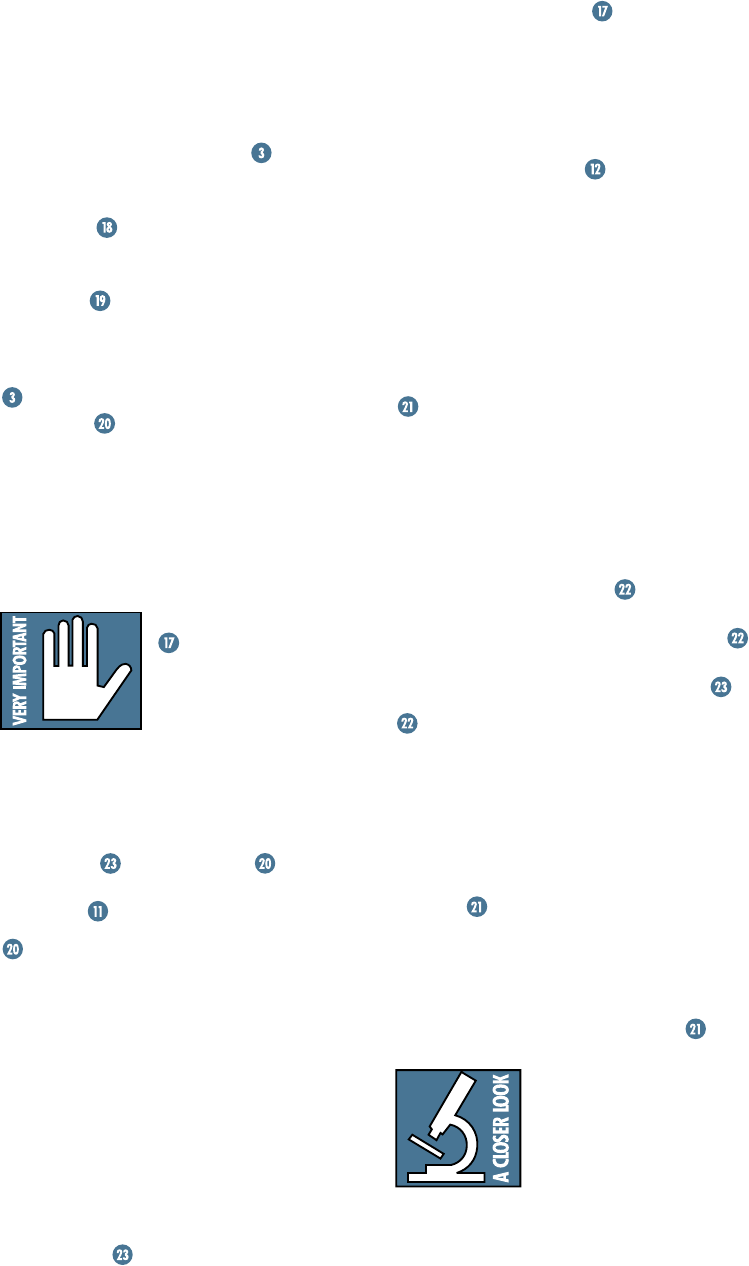
20
The
AMP MODE
switch determines the in-
put signal routing within the M•1200/M•1400
amplifier. Shipped from the factory, the switch
is set to
STEREO
. This is correct for about 90%
of the applications using an amp like this
(hence the
TYPICAL
indicator near it). But
you may be in the 10% bracket, requiring spe-
cial input routing within the amp.
AMP MODE
should be configured before
operation — if you must change it during per-
formance, turn down the
GAIN
controls as
a precaution to protect the speakers from any
inadvertent pops or thumps.
STEREO
mode (separate left and right
inputs, separate left and right outputs) is the
typical setup for amplifying stereo signals.
MONO
mode (sometimes called Dual-
Mono – one mono input, two mono outputs) is
for sending a mono signal to two different
speaker sets, with separately-adjustable
GAIN
controls.
BRIDGE
mode (sometimes called
Bridged-Mono – one mono input, one mono
output) uses both sides of the amp to double
the power to one speaker set. With two M•1200
power amplifiers, each set to
BRIDGE
mode,
you can deliver as much as 1200 watts per
amplifier.
If you set the
AMP MODE
switch in
MONO
or
BRIDGE
, use the
CHAN-
NEL 1
inputs only — the
CHANNEL 2
inputs go no-
where in this case.
Note: There is one exception to this rule. If you
have the
OUTPUT APPLICATION
switched to
SUBWOOFER
, the inputs to Channels 1 and 2
are summed regardless of the
AMP MODE
setting (see ). Also,
BRIDGE
mode re-
quires special connections at the
SPEAKER
OUTPUTS
.
BRIDGE
In
STEREO
mode, the M•1200 Power
Amplifier can deliver 600 watts per side into
2 ohms. If that’s not enough, you can use two
M•1200s, each in
BRIDGE
mode, and deliver
1200 watts per amplifier into 4 ohms. The
M•1400 produces 630 watts per side into
2 ohms in
STEREO
and 1260 watts into 4 ohms
in
BRIDGE
mode. Or, you can use one amp in
BRIDGE
mode to power a monaural system.
Finally,
BRIDGE
mode is also popular for
subwoofer applications — but please see
SUBWOOFER
for a special subwoofer surprise.
To use all the M•1200/M•1400’s power to
drive one speaker cabinet using
BRIDGE
mode,
you’ll have to do four things:
1. Turn off the power to the M•1200/M•1400.
2. Set the
AMP MODE
switch to
BRIDGE
.
3. Connect the positive side of the speaker
cable to the Channel 1 red (+) binding post.
4. Connect the negative side of the speaker
cable to the Channel 2 red (+) binding post.
5. (Okay, make that five things!) Use only the
CHANNEL 1 INPUT
(unless you’re using
the
SUBWOOFER OUTPUT APPLICATION
).
The
CHANNEL 1 GAIN
control adjusts the
output level of the amplifier. The
CHANNEL 2
GAIN
control has no effect.
Once again: Before making connections to
an amp or reconfiguring an amp’s routing, turn
the power off, make the changes, then turn the
power back on.
OUTPUT APPLICATION
The
OUTPUT APPLICATION
switch should
be configured before you turn on the amplifier.
This switch allows you to choose between three
different configurations:
LIMITER ON (TYPICAL)
. This is the normal
configuration: full-bandwidth audio with pro-
tective limiting (please see
).
LIMITER OFF
is also full bandwidth audio,
but without protective limiting (please see
).
SUBWOOFER
mode, with built-in low-pass
filter, no protective limiting (please see
).
LIMITER
The
LIMITER
is not designed to alter your
sound — it’s just there to protect your speak-
ers from clipping. Its effect is virtually
transparent, meaning you probably won’t even
notice any audible difference. We recommend
that you leave it engaged (via
OUTPUT APPLI-
CATION
), hence the
TYPICAL
label below it.
If you’re working at quiet levels all the time,
or you’ve already placed a compressor/limiter
in the signal path, or if you just hate compres-
sion, you can leave the
LIMITER
out of the
circuit (via
OUTPUT APPLICATION
).
The
LIMITER
senses when
the amp is about to be
overdriven and attenuates
the overall level just enough
to keep the signal from clip-
ping. Clipping occurs when the output voltage
no longer linearly follows the input voltage
and simply stops. This causes a sine wave to



